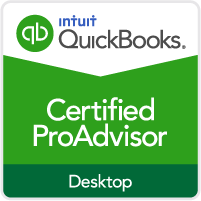Most small businesses need help with cash during certain stages of their growth. If you find that you have more plans than cash to do them with, then it might be time for a loan. Here are five steps you can take to make the loan process go smoother.
1. Make a plan.
Questions like how much you need and how much you will benefit from the cash infusion are ones you should consider. If you don’t already have some version of a budget and business plan, experts recommend you spend a bit of time drafting those items. There’s nothing worse than getting a loan and finding out you needed twice the cash to do what you wanted to accomplish.
2. Know your credit-related numbers.
Do you know your credit score? Is there anything in your credit history that needs cleaning up before it slows down the loan approval process?
Take a look also at your standard financial ratios. These are ratios like your current ratio (current assets / current liabilities) and debt-to-equity ratio. If these are in line with what your lender is expecting, then you are in good shape to proceed.
3. Research your options.
Luckily, there are many more options for financing your business today than there have been in the past. Traditional options, such as banks, still exist, but it can be difficult to get a bank loan for a small business.
Here are some online loan sources where investors are matched with borrowers via an online transaction:
- Kabbage
- OnDeck
- LendingClub
- FundBox
- BlueVine
Or you can go to Fundera and compare which loan is the most economical.
There is also crowdfunding, which is very different from a loan. Crowdfunding is a way to raise cash from many people who invest a small amount. Top sites include GoFundMe and KickStarter, where you can find out more about how it works.
Other ways to get cash include tapping into your personal assets: using credits cards, refinancing a house, and borrowing money from family and friends.
4. Create your loan package.
Most lenders will want to know your story, and a loan package can provide the information they need to decide whether they want to loan you money or not. A good loan package includes the following:
- A narrative that includes why you need the loan, how much you want, and how you will pay it back. A good narrative will also list sources of collateral and a willingness to make a personal guarantee.
- Current financial statements and supporting credit documentation, such as bank statements and credit history.
- A business plan and budget, or portions of it, that cover your business overview, vision, products and services, and market.
- A resume or biography of the business owners and a description of the organization structure and management.
While it takes time to put together a great loan package, it’s also a great learning experience to go through the exercise of pulling all of the information together.
5. Execute!
You’re now ready to get your loan. Or not. Going through these five steps helps you discover more about your business and helps you make an informed decision about whether a loan is still what you want and need.
Throughout the process, you may have learned new information that tells you you’re not quite ready for a loan, or that in fact, you are. At any rate, preparing for a loan is a great learning process, and the good news is there are lots of avenues for small businesses to get the cash they need to grow.



 Want a free consultation with us? Give us a call at
Want a free consultation with us? Give us a call at 
